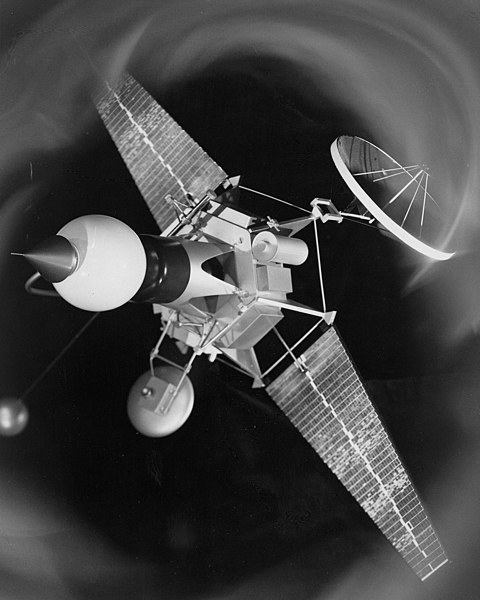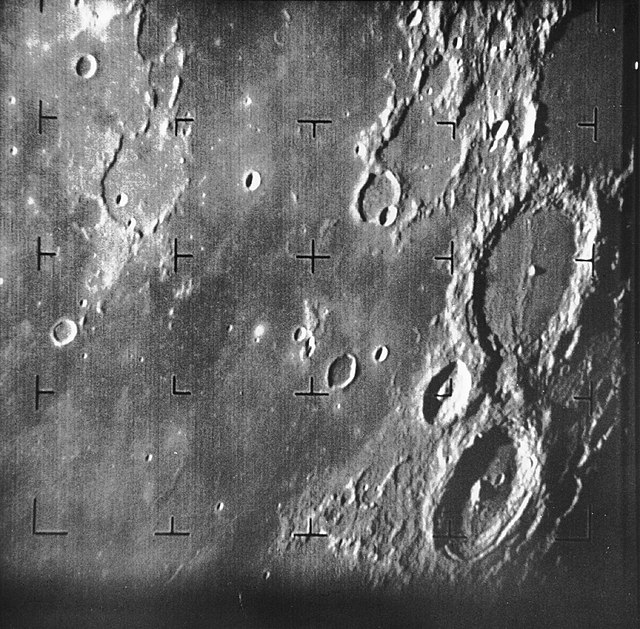Ranger 3 was a space exploration mission conducted by NASA to study the Moon. The Ranger 3 robotic spacecraft was launched January 26, 1962 as part of the Ranger program. Due to a series of malfunctions, the spacecraft missed the Moon by 22,000 mi (35,000 km) and entered a heliocentric orbit.
Ranger 3
Artist's concept of Ranger 3 in space
Launch of Ranger 3
The Ranger program was a series of uncrewed space missions by the United States in the 1960s whose objective was to obtain the first close-up images of the surface of the Moon. The Ranger spacecraft were designed to take images of the lunar surface, transmitting those images to Earth until the spacecraft were destroyed upon impact. A series of mishaps, however, led to the failure of the first six flights. At one point, the program was called "shoot and hope". Congress launched an investigation into "problems of management" at NASA Headquarters and Jet Propulsion Laboratory. After two reorganizations of the agencies, Ranger 7 successfully returned images in July 1964, followed by two more successful missions.
First image of the Moon returned by a Ranger mission (Ranger 7 in 1964)
Program Ranger Organization Chart
Ranger block I spacecraft diagram. (NASA)
A Ranger probe undergoing restoration at the Udvar-Hazy Center







